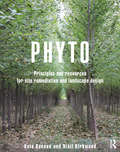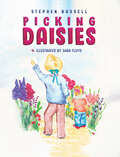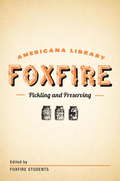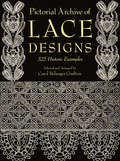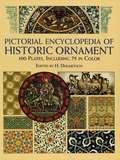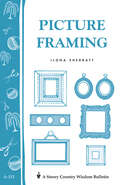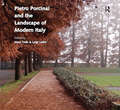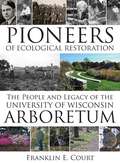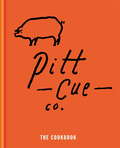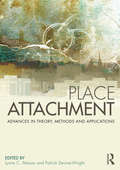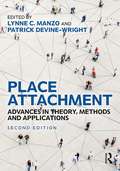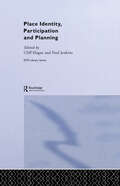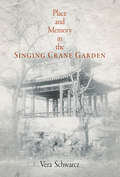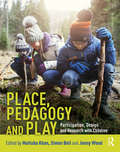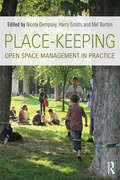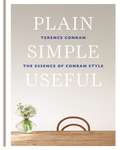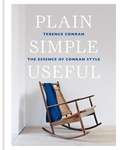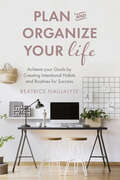- Table View
- List View
Phyto: Principles and Resources for Site Remediation and Landscape Design
by Kate Kennen Niall KirkwoodWinner of the 2017 CBHL Literature Award of Excellence in Landscape Design and Architecture Phyto presents the concepts of phytoremediation and phytotechnology in one comprehensive guide, illustrating when plants can be considered for the uptake, removal or mitigation of on-site pollutants. Current scientific case studies are covered, highlighting the advantages and limitations of plant-based cleanup. Typical contaminant groups found in the built environment are explained, and plant lists for mitigation of specific contaminants are included where applicable. This is the first book to address the benefits of phytotechnologies from a design point of view, taking complex scientific terms and translating the research into an easy-to-understand reference book for those involved in creating planting solutions. Typically, phytotechnology planting techniques are currently employed post-site contamination to help clean up already contaminated soil by taking advantage of the positive effects that plants can have upon harmful toxins and chemicals. This book presents a new concept to create projective planting designs with preventative phytotechnology abilities, ‘phytobuffering’ where future pollution may be expected for particular site programs. Filled with tables, photographs and detailed drawings, Kennen and Kirkwood's text guides the reader through the process of selecting plants for their aesthetic and environmental qualities, combined with their contaminant-removal benefits.
Picking Daisies
by Stephen RussellGemma goes for a short stay in the countryside with her gran and when her parents arrive to collect her, they have a pleasant surprise.
Pickling and Preserving: The Foxfire Americana Library (3) (The Foxfire Americana Library)
by Inc. Foxfire FundOut of the kitchens and cupboards of Appalachia comes a warmhearted collection of tried-and-true methods for pickling and preserving fruits and vegetables. Part history, part practical recipe book, here homegrown cooks offer advice on everything from bleaching and drying produce to harvesting your own sorghum and making homemade apple butter. Recipes include: Watermelon PicklesCucumber RelishSauerkrautQuince Honey Pear Preserves Mint Jelly Leather Breeches Beans
Pictorial Archive of Lace Designs: 325 Historic Examples (Dover Pictorial Archive)
by Carol Belanger GraftonDetailed illustrations and photographs of over 300 exquisite lace samples and designs created over past 500 years. Delicate masterpieces depict human and mythical figures, filigree designs of hearts and flowers, beautiful floral and foliate motifs, and more. Royalty-free designs from elegant borders, edgings, collars, doilies, much else.
Pictorial Encyclopedia of Historic Ornament: 100 Plates, Including 75 in Full Color
by H. DolmetschOne of the great anthologies of historic ornament and design. A veritable treasure chest of royalty-free images, arranged chronologically: Roman architecture and sculpture, Byzantine embroidery, and illuminated manuscripts; Italian glass painting, pottery, and French tapestries from the Renaissance; mosaic floors, painted plasterwork, and metal ornaments. Over 1,500 color and black-and-white illustrations.
Picture Framing: Storey's Country Wisdom Bulletin A-153 (Storey Country Wisdom Bulletin Ser.)
by Ilona SherrattSince 1973, Storey's Country Wisdom Bulletins have offered practical, hands-on instructions designed to help readers master dozens of country living skills quickly and easily. <P><P>There are now more than 170 titles in this series, and their remarkable popularity reflects the common desire of country and city dwellers alike to cultivate personal independence in everyday life.
Pietro Porcinai and the Landscape of Modern Italy
by Marc Treib Luigi LatiniBorn in Florence in 1910, Pietro Porcinai grew up on the classic grounds of the Villa Gamberaia in Settignano where his father served as head gardener. Although he studied agriculture in college, Porcinai’s true interest lay in the landscape architecture practice he founded in 1938. Early projects centered in the area of Arezzo, whose style reflected modernÂized traditional models. In the postwar era the office flourished, producing modern gardens of remarkable design and use of plants. In these works, Porcinai convincingly demonstrated the affinity between historical architecture and landscapes unÂcompromisingly modern. During his long and productive career he also consulted on autostrada planning, and designed public parks, memorials, and even a Pinocchio theme park-at times collaborating with noted architects such as Renzo Piano, Carlo Scarpa and Oscar Niemeyer. This book, the first English-language study on Pietro Porcinai provides a comprehensive and richly illustrated overview of his life and remarkable achievements.
Pioneer of Ecological Restoration
by Franklin E. CourtInternationally renowned for its pioneering role in the ecological restoration of tallgrass prairies, savannas, forests, and wetlands, the University of Wisconsin Arboretum contains the world's oldest and most diverse restored ecological communities. A site for land restoration research, public environmental education, and enjoyment by nature lovers, the Arboretum remains a vibrant treasure in the heart of Madison's urban environment.
Pitt Cue Co. - The Cookbook
by Tom Adams Richard H. Turner Jamie Berger Simon AndersonWith great recipes for meats, sauces and rubs mixed with ideas for pickles, slaws, puddings and cocktails, plus features on meats, equipment and methods, the Pitt Cue Co. Cookbook is your guide to enjoying the best hot, smoky, sticky, spicy grub all year round.From Pitt Cue's legendary Pickle backs and bourbon cocktails, to their acclaimed Pulled pork shoulder; Burnt ends mash; Smoked ox cheek toasts with pickled walnuts; Lamb rib with molasses mop and onion salad; Chipotle & confit garlic slaw; Crispy pickled shiitake mushrooms; Toffee apple grunt; Sticky bourbon & cola pudding and so much more, it's all irresistibly delicious food to savour and share.
Pitt Cue Co. - The Cookbook
by Tom Adams Jamie Berger Simon AndersonWith great recipes for meats, sauces and rubs mixed with ideas for pickles, slaws, puddings and cocktails, plus features on meats, equipment and methods, the Pitt Cue Co. Cookbook is your guide to enjoying the best hot, smoky, sticky, spicy grub all year round.From Pitt Cue's legendary Pickle backs and bourbon cocktails, to their acclaimed Pulled pork shoulder; Burnt ends mash; Smoked ox cheek toasts with pickled walnuts; Lamb rib with molasses mop and onion salad; Chipotle & confit garlic slaw; Crispy pickled shiitake mushrooms; Toffee apple grunt; Sticky bourbon & cola pudding and so much more, it's all irresistibly delicious food to savour and share.
Plaagbestrijding voor biologisch tuinieren
by Amber Richards Dick StadaMaak je je zorgen over het gebruik van chemische middelen in je tuin en je kweekt ook nog groente, kruiden en fruit? Dat is heel goed, want deze middelen kunnen gezondheidsrisico’s veroorzaken voor je gezin, je huisdieren en het milieu. Er is wel een probleem. Hoe bied je bescherming biedt tegen de diverse soorten ziektes die je tuin kunnen verwoesten? Plaagestrijding voor biologisch tuinieren is een e-book voor (vooral beginnende) tuiniers, waarin praktische en soms verrassende methodes beschreven worden om deze problemen het hoofd te bieden op een biologische en natuurlijke manier. Biologisch voedsel dat je zelf verbouwt is gezonder, veiliger, lekkerder en verser dan de tegenhanger die chemisch is behandeld. Het bevordert ook een gezondere leefomgeving voor iedereen. Als je je eigen biologische groente verbouwt, heb je minder uitgaven aan eten en het is ook nog eens een leuke hobby. Zelfs als je weinig ruimte en tijd hebt voor een moestuin met alles erop en eraan, zijn verhoogde bedden of een tuin in potten heel goede alternatieven. Ook hiervoor is de kennis uit dit boek handig om daarmee een prachtige oogst te krijgen. Download hier een exemplaar.
Place Attachment: Advances in Theory, Methods and Applications
by Patrick Devine-Wright Lynne C. ManzoRecipient of the 2014 EDRA Achievement Award. Place attachments are emotional bonds that form between people and their physical surroundings. These connections are a powerful aspect of human life that inform our sense of identity, create meaning in our lives, facilitate community and influence action. Place attachments have bearing on such diverse issues as rootedness and belonging, placemaking and displacement, mobility and migration, intergroup conflict, civic engagement, social housing and urban redevelopment, natural resource management and global climate change. In this multidisciplinary book, Manzo and Devine-Wright draw together the latest thinking by leading scholars from around the globe, capturing important advancements in three areas: theory, methods and application. In a wide range of conceptual and applied ways, the authors critically review and challenge contemporary knowledge, identify significant advances and point to areas for future research. This volume offers the most current understandings about place attachment, a critical concept for the environmental social sciences and placemaking professions.
Place Attachment: Advances in Theory, Methods and Applications
by Patrick Devine-Wright Lynne C. ManzoFollowing on from the ground-breaking first edition, which received the 2014 EDRA Achievement Award, this fully updated text includes new chapters on current issues in the built environment, such as GIS and mapping, climate change, and qualitative approaches. Place attachments are powerful emotional bonds that form between people and their physical surroundings. They inform our sense of identity, create meaning in our lives, facilitate community, and influence action. Place attachments have bearing on such diverse issues as rootedness and belonging, placemaking and displacement, mobility and migration, intergroup conflict, civic engagement, social housing and urban redevelopment, natural resource management, and global climate change. In this multidisciplinary book, Manzo and Devine-Wright draw together the latest thinking by leading scholars from around the globe, including contributions from scholars such as Daniel Williams, Mindy Fullilove, Randy Hester, and David Seamon, to capture significant advancements in three main areas: theory, methods, and applications. Over the course of fifteen chapters, using a wide range of conceptual and applied methods, the authors critically review and challenge contemporary knowledge, identify significant advances, and point to areas for future research. This important volume offers the most current understandings about place attachment, a critical concept for the environmental social sciences and placemaking professions.
Place Identity, Participation and Planning (RTPI Library Series #Vol. 7)
by Paul Jenkins Cliff HagueThe central concern of this book is place identity, and its representation and manipulation through planning. Place identity is of growing international concern, both in planning practice and in academic work. The issue is important to practitioners because of the impact of globalisation on notions of place. This book includes comparisons between Norway, the Netherlands, Sweden and Scotland, focusing strongly on the question of how different spatial planning systems and practices are currently conceiving and affecting issues of place identity.
Place Making in International Practice of Landscape Architecture: A Study of Australian Practices in China (Advanced Topics in Science and Technology in China #64)
by Yun ZhangThis book explores international practice in landscape architecture, focusing on the provision of services from Australia to China during China’s contemporary urbanization and Australian landscape architects’ approaches to place. Landscape architectural practice requires planners and designers to have a deep understanding of local culture, site characteristics, craftsmanship and even project procedures that are often intangible. How to acquire the above local knowledge has become a major challenge for international teams. Through the survey of the practice of Australian landscape practices in China and the case study of Li Lake planning and design project, this book reveals the process and difficulties of landscape planning and design as a transnational practice, as well as its special value as a way of cross-cultural fertilization. This book is intended for students, practitioners and researchers in the fields of landscape architecture, architecture and urban planning.
Place and Memory in the Singing Crane Garden
by Vera SchwarczThe Singing Crane Garden in northwest Beijing has a history dense with classical artistic vision, educational experimentation, political struggle, and tragic suffering. Built by the Manchu prince Mianyu in the mid-nineteenth century, the garden was intended to serve as a refuge from the clutter of daily life near the Forbidden City. In 1860, during the Anglo-French war in China, the garden was destroyed. One hundred years later, in the 1960s, the garden served as the "ox pens," where dissident university professors were imprisoned during the Cultural Revolution. Peaceful Western involvement began in 1986, when ground was broken for the Arthur Sackler Museum of Art and Archaeology. Completed in 1993, the museum and the Jillian Sackler Sculpture Garden stand on the same grounds today.In Place and Memory in the Singing Crane Garden, Vera Schwarcz gives voice to this richly layered corner of China's cultural landscape. Drawing upon a range of sources from poetry to painting, Schwarcz retells the garden's complex history in her own poetic and personal voice. In her exploration of cultural survival, trauma, memory, and place, she reveals how the garden becomes a vehicle for reflection about history and language.Encyclopedic in conception and artistic in execution, Place and Memory in the Singing Crane Garden is a powerful work that shows how memory and ruins can revive the spirit of individuals and cultures alike.
Place, Pedagogy and Play: Participation, Design and Research with Children
by Matluba KhanPlace, Pedagogy and Play connects landscape architecture with education, psychology, public health and planning. Over the course of thirteen chapters it examines how design and research of places can be approached through multiple lenses – of pedagogy and play and how children, as competent social agents, are engaged in the process of designing their own spaces – and brings a global perspective to the debate around child-friendly environments. Despite growing evidence of the benefits of nature for health, wellbeing, play and learning, children are increasingly spending more time indoors. Indeed, new policy ideas and public campaigns suggest how children can become better connected with nature, yet linking outdoor space to pedagogy is largely overlooked in research. By focusing on three themes within these debates, place and play; place and pedagogy; and place and participation, this book explores a variety of angles to show that best practice requires dialogue between research disciplines, designers, educationists and psychologists, and a move beyond seeing the spaces children inhabit as the domain only of childhood professionals. Through illustrated case studies this book presents a wider picture of the state of childhood today, and offers practical solutions and further research avenues that promote a more holistic and internationally focused perspective on place, pedagogy and play for built-environment professionals. Chapter 12 of this book is freely available as a downloadable Open Access PDF under a Creative Commons Attribution-Non Commercial-No Derivatives 4.0 license.
Place-Keeping: Open Space Management in Practice
by Harry Smith Nicola Dempsey Mel BurtonPlace-Keeping presents the latest research and practice on place-keeping – that is, the long-term management of public and private open spaces – from around Europe and the rest of the world. There has long been a focus in urban landscape planning and urban design on the creation of high-quality public spaces, or place-making. This is supported by a growing body of research which shows how high-quality public spaces are economically and socially beneficial for local communities and contribute positively to residents’ quality of life and wellbeing. However, while large amounts of capital are spent on the creation of open spaces, little thought is given to, and insufficient resources made available for, the long-term maintenance and management of public spaces, or place-keeping. Without place-keeping, public spaces can fall into a downward spiral of disrepair where anti-social behaviour can emerge and residents may feel unsafe and choose to use other spaces. The economic and social costs of restoring such spaces can therefore be considerable where place-keeping does not occur. Place-Keeping also provides an accessible presentation of the outputs of a major European Union-funded project MP4: Making Places Profitable, Public and Private Open Spaces which further extends the knowledge and debate on long-term management of public and private spaces. It will be an invaluable resource for students, academics and practitioners seeking critical but practical guidance on the long-term management of public and private spaces in a range of contexts.
Placing Nature: Culture And Landscape Ecology
by Joan Nassauer Chris FaustLandscape ecology is a widely influential approach to looking at ecological function at the scale of landscapes, and accepting that human beings powerfully affect landscape pattern and function. It goes beyond investigation of pristine environments to consider ecological questions that are raised by patterns of farming, forestry, towns, and cities.Placing Nature is a groundbreaking volume in the field of landscape ecology, the result of collaborative work among experts in ecology, philosophy, art, literature, geography, landscape architecture, and history. Contributors asked each other: What is our appropriate role in nature? How are assumptions of Western culture and ingrained traditions placed in a new context of ecological knowledge? In this book, they consider the goals and strategies needed to bring human-dominated landscapes into intentional relationships with nature, articulating widely varied approaches to the task.In the essays: novelist Jane Smiley, ecologist Eville Gorham, and historian Curt Meine each examine the urgent realities of fitting together ecological function and culture philosopher Marcia Eaton and landscape architect Joan Nassauer each suggest ways to use the culture of nature to bring ecological health into settled landscapes urban geographer Judith Martin and urban historian Sam Bass Warner, geographer and landscape architect Deborah Karasov, and ecologist William Romme each explore the dynamics of land development decisions for their landscape ecological effects artist Chris Faust's photographs juxtapose the crass and mundane details of land use with the poetic power of ecological pattern.Every possible future landscape is the embodiment of some human choice. Placing Nature provides important insight for those who make such choices -- ecologists, ecosystem managers, watershed managers, conservation biologists, land developers, designers, planners -- and for all who wish to promote the ecological health of their communities.
Plain Simple Useful: The Essence Of Conran Style
by Terence ConranTerence Conran has always believed that objects - and surroundings - that are plain, simple and useful are the key to easy living. By being practical and performing well over time, they are as much the antidote to superficial styling as they are to the shoddy and second-rate. Applied to the home as a whole, this discerning approach results in interiors that are effortlessly stylish, confident and timeless, with plenty of room for the expression of personal taste.Plain Simple Useful is organized according to the main activities that take place at home. Inspirational interiors, many of which are Conran's own, and a number of projects designed by him exclusively for this book, provide all the guidance you need to tailor-make your own storage. The book also features iconic examples of classic designs that will enhance any home, as well as a peek behind the closed doors of those well-ordered cupboards, larders and other stowing spaces that contribute so much to easy living.
Plain Simple Useful: The Essence of Conran Style
by Sir Terence Conran'A handsome yet joyful manual for easy, stylish living.' - Architectural DigestTerence Conran always believed that objects - and surroundings - that are plain, simple and useful are the key to easy living. By being practical and performing well over time, they are as much the antidote to superficial styling as they are to the shoddy and second-rate. Applied to the home as a whole, this discerning approach results in interiors that are effortlessly stylish, confident and timeless, with plenty of room for the expression of personal taste. Plain Simple Useful is organized according to the main activities that take place at home. Inspirational interiors, many of which were Conran's own, provide all the guidance you need to tailor-make your own storage. The book also features iconic examples of classic designs that will enhance any home, as well as a peek behind the closed doors of those well-ordered cupboards, larders and other stowing spaces that contribute so much to easy living.This updated edition of the book features a new chapter on plain, simple, useful style outdoors with elegant contemporary ideas for eating and relaxing spaces outside.
Plan and Organize Your Life: Achieve your Goals by Creating Intentional Habits and Routines for Success
by Beatrice NaujalyteDesign your days intentionally with this smart, inspiring guide from the creator of the Bliss Bean podcast and YouTube channel. This comprehensive and interactive &“planning bible&” is packed with proven advice on how to get organized, embrace simple habits, and work your way toward true self-improvement and personal development. Beatrice Naujalyte introduces us to the four pillars of an intentional life: planning, organization, productivity, and routines. With these simple tools, you&’ll be able to master everything from effective note taking to minimalist workspace organization. This book is the ultimate guide to developing a planning system to effectively execute your daily, weekly, monthly, and yearly goals. Whether you have professional, personal, or creative planning to do, this book helps you accomplish your smallest and biggest goals by creating new habits and setting realistic expectations—with a system that works for you. Included are: Organizational tips and prompts for your everyday success Time and task management tools to help guide you Productivity tips for your ultimate lifestyle change
Planen mit Tageslicht: Grundlagen für die Praxis (essentials)
by Renate Hammer Mathias WambsganßNeue Erkenntnisse zur Wichtigkeit ausreichender Tageslichtversorgung im Innenraum haben planungsrelevante Änderungen normativer Vorgaben nach sich gezogen. Renate Hammer und Mathias Wambsganß veranschaulichen die neuen Anforderungen und erläutern die Möglichkeiten zur planerischen Umsetzung. Die Autoren klären, wann Tageslichtversorgung und Besonnung als ausreichend gelten, welche Qualitäten die Sichtverbindung nach außen erfüllen muss und wie Blendung durch Tageslicht zu begrenzen ist. Angaben zur melanopischen Wirkungsweise von Tageslicht bieten einen Einstieg in den planerischen Umgang mit nicht-visuellen Kriterien. Ein weiteres Kapitel zeigt die Schnittstellen mit anderen Aspekten der Bauplanung.Die Autoren:Dr. Renate Hammer studierte Architektur, Solararchitektur und Philosophie in Wien und Krems sowie Urban Engineering in Tokio. 2015 gründete sie das Institute of Building Research & Innovation. Sie unterrichtet einschlägig an der Kunstuniversität Linz und der FH Campus Wien. Prof. Mathias Wambsganß studierte Architektur an der Universität Karlsruhe (TH). 2014 gründete er das Büro „3lpi lichtplaner“ in München. Er ist langjähriges Mitglied im Vorstand der LiTG e.V. und wurde 2007 als Professor an die TH Rosenheim berufen.
Planet-Friendly Hacks: Simple Tips and Budget-Friendly Advice for Sustainable Living
by Elizabeth AjaoThis handy guide is brimming with quick tips, life hacks and budget-friendly tricks to help you reduce your carbon footprint and live more sustainablyAn eco-friendly lifestyle is expensive and time-consuming, right? Wrong! There are countless ways to make green choices that don’t take a toll on your time, your bank balance or the planet.This book is your one-stop guide to living a more sustainable lifestyle. Whether you need tips on conserving energy or reducing food waste, or you want to give your home a makeover without impacting the planet, these pages include everything you need to get started. You will find:Clever life hacks to make reducing your carbon footprint that bit easierSimple tips to help you make planet-friendly choices in everyday lifeSmart advice for eco-living on a budgetInspiration for eco-friendly crafts and DIY projectsIt’s more important than ever to do our bit for the environment, and Planet-Friendly Hacks will help you live life to the full without costing the earth.
Planetizen's Contemporary Debates in Urban Planning
by Abhijeet Chavan Christian Peralta Christopher Steins Abhijeet PlanetizenPlanetizen's Contemporary Debates in Urban Planning is a fascinating review of major topics and issues discussed in the field of urban planning, assembled by editors at Planetizen, the leading source of news and information for the planning and development community on the web. The book brings together a wide range of editorial and discussion topics, coupled with commentary and overviews to create an enlightening record of the continuously evolving philosophy of building and managing cities. The book's contributors include the most well-known experts in the planning and design fields, among them James Howard Kunstler, Alex Garvin, Andres Duany, Joel Kotkin, and Wendell Cox. These and other prominent thinkers offer passionate debates and thought-provoking commentary on the most important and controversial topics in the field of urban planning and design: gentrification, eminent domain, the philosophical divide between the Smart Growth community, libertarians and New Urbanists, regional growth patterns, urban design trends, transportation systems, and reaction to disasters such as Katrina and 9/11 that changed the way we look at cities and security. Planetizen's Contemporary Debates in Urban Planning provides readers with a unique and accessible introduction to a broad array of ideas and perspectives. With the increasing awareness of the need for sound urban planning to ensure the economic, environmental, and social health of modern society, Planetizen's Contemporary Debates in Urban Planning gives professionals in the field and concerned citizens alike a deeper understanding of the critical, complex issues that continue to challenge urban planners, designers, and developers.
